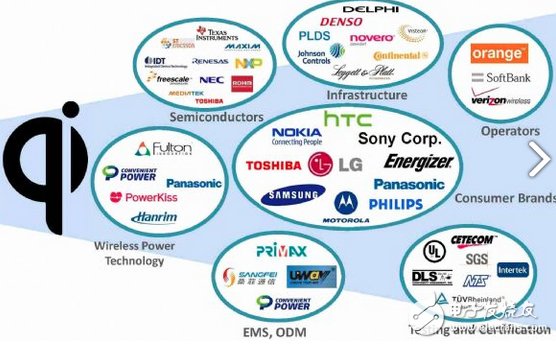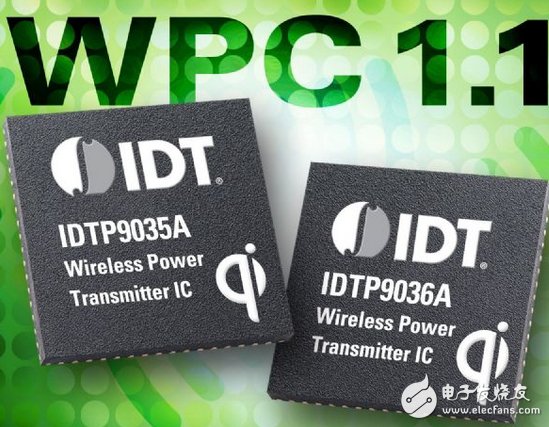Magnetic induction resonance dual mode combination accelerates the popularization of wireless charging
Time:2023-04-09
Views:1093
With the continuous integration of various technology camps, wireless charging technology has gained opportunities for interaction and compatibility among various technologies. Among them, the visibility of the application of magnetic resonance wireless charging solutions is significantly increasing. In the future, mobile devices only need to be equipped with Rx coils to provide efficient energy replenishment without the need for power cord connections, without the need to prepare additional chargers


Wireless charging technology has actually developed quite early, but early technologies mostly struggled with the inability to significantly improve energy conversion efficiency. The losses caused by the energy transfer process and the need to take a long time to charge have prevented related applications from expanding in the market. Wireless charging technology solutions can only be used in some designs that require high waterproofing and cannot be equipped with charging holes.

There are a considerable number of businesses supporting Qi wireless charging technology.

The development of wireless charging technology has become more mature, and the picture shows the application solution of IDT. IDT
Magnetic Resonance Technology Jumps Up Dual Mode Support Scheme is Under Improvement
But now the new generation of wireless charging technology utilizes the main control chip to continuously monitor the charging process and provide optimal charging power point tracking, which can achieve efficient and high-energy wireless charging tasks quickly. However, due to the fact that the formulation of wireless charging market specifications is an important level of market allocation, various technical solutions continue to struggle and there is always no common standard released, Among the many mature wireless charging technology solutions, the A4WP (Alliance for Wireless Power) camp of Magnetic Resonance (MR) wireless charging solutions has become the mainstream wireless charging technology in mobile devices, medical devices, and even automotive applications. After the official release of the brand recognition and product certification plan, a large number of magnetic resonance wireless charging solutions have sprung up like mushrooms after a rain.
At present, there are quite a few companies that have expressed support for the magnetic resonance wireless charging solution of A4WP, including MediaTek MediaTek, ConvenientPower, Mixed Analog Power Solution, and others. The latest reference designs and samples have been released in CES, and magnetic resonance wireless charging technology is rapidly penetrating the application market, such as automotive, medical, and even military equipment applications. Among them, the application product areas that attract the most market attention are the most, The application of intelligent mobile device products, as users have increasingly high requirements for the appearance and performance of mobile devices, the power consumption of products has become a difficulty in device design. By integrating wireless charging technology, not only can mobile devices reduce the design of charging port connectors, but also achieve excellent waterproof performance. The new generation of magnetic resonance wireless charging has the high-efficiency charging ability, It can also meet the application needs of mobile device users.
Original magnetic induction camp chip manufacturers are introducing dual mode development solutions one after another
In addition to the magnetic resonance technology camp, Texas Instruments, which has invested heavily in magnetic induction wireless charging technology, has also collaborated with PowerbyProxim for technology licensing. They will combine their patents and expertise in the field of magnetic resonance and magnetic induction wireless charging to jointly develop Qi standard products compatible with wireless charging solutions from the Wireless Power Consortium (WPC), The currently targeted imported products include smart action devices, gaming peripherals, wearable computing products, etc., actively expanding the wireless charging application market.
After the release of reference designs and related specifications by A4WP in 2013, a large number of CESs in 2014 launched corresponding product designs, making wireless charging applications a hot application technology. For example, MediaTek released a multimode wireless charging solution, which not only supports A4WP magnetic resonance technology, but also utilizes chip sensing and calibration technology, Other wireless charging technologies can also be applied to the same charging stand, which saves the procurement cost of purchasing exclusive charging stands for different wireless charging technologies for end consumers. In MediaTek‘s multimode wireless charging solution, different wireless charging technology products such as magnetic induction and magnetic resonance can be directly supported, and the charging efficiency can also meet the standard requirements.
Wireless charging solutions can improve mobile device design limitations
As for the WiTricity industry, a reference design solution for the magnetic resonance wireless charging system has been released at CES, which includes a set of Tx wireless charging boards (coils) and a set of Rx wireless charging battery back covers. The product is designed to integrate Apple iPhone 5/5s accessories, and the industry claims to also launch corresponding design products for Android phones or tablets. Another MAPS Korean IC design company is showcasing its first mass-produced magnetic resonance wireless charging receiver product, which has integrated Full Active Rectifier (FAR) technology. This technology allows mobile devices to practice long-distance wireless charging applications, without the need for Rx/Tx to be tightly attached to achieve better energy conversion efficiency and provide users with more convenient charging application flexibility, as in most wireless charging scenarios today, The commercialization of related technologies is also quite worth looking forward to.
Looking at the user‘s expectations for the application of wireless charging technology, which are basically long-distance, high energy conversion efficiency, low heat generation, and better energy-saving performance, most of them are the expectations of consumers for wireless charging solutions, which are also the goals of product developers‘ active efforts. However, based on the currently visible product solutions, wireless charging products still need to be within a limited charging range and closely fitting wireless charging distance, In order to achieve better energy conversion efficiency, in fact, the temperature caused by the charging process of the battery and the temperature rise of the wireless energy transmission coil in the product can make users question the safety of wireless charging technology.
Wireless transmission distance limitations remain the current technological threshold
For existing magnetic induction wireless charging technology solutions, to expand the distance between Rx/Tx in wireless charging, it is necessary to add a signal amplifier (Repeater) in the wireless charging solution to effectively extend the charging distance! In this way, the increase in the number of parts in the Repeater will lead to an increase in the cost of the manufacturing process, which will also increase the design complexity of the end product. On the other hand, although the magnetic resonance wireless charging scheme can perform better than the magnetic induction wireless charging scheme in charging distance, it can actually lead to low energy conversion efficiency due to extending the charging distance. For the distance issue of wireless charging applications, there are technical barriers that need to be overcome in both magnetic induction and magnetic resonance wireless charging technologies.
Observing the current mature multi-mode support (magnetic induction/magnetic resonance) wireless charging scheme, it is possible to charge products at a charging efficiency of 65% and a wireless transmission distance of 15-18mm. The multi-mode support can also meet Qi‘s wireless charging safety standards, safety protection measures, and the same input voltage. However, the goal of future operators is to develop larger wireless charging platforms that can be used to practice wireless charging programs with multiple devices simultaneously, Achieve the purpose of using Spatial Freedom for wireless charging.
Qi standard technology has a large application volume and high market visibility
Even though the development speed of magnetic resonance technology is increasing, in reality, the current market trend still has a significant competitive advantage with the Qi standard, as the number of products and operators of the Qi standard is still large. It is foreseeable that more and more products will be launched with multi-mode designs that are compatible with magnetic induction and magnetic resonance. Chip developers will not only launch Qi standard solutions, but also develop advanced application technology solutions that integrate Qi with magnetic resonance, In order to compete in a more diverse application market, there should be an increasing selection of products and related solutions for dual mode solutions.
For example, Integrated Device Technology released a dual mode wireless charging product reference design and corresponding solution in 2014 CES that supports the Wireless Charging Alliance Qi standard and Power Matters Alliance (PMA) standard. On its dual mode wireless charging device Prototype, it can already support PMA or Qi transmitters to communicate with each other, and also support WPC 1.1 wireless charging transmitters with a Triple coil structure. Additionally, Freescale is accelerating its investment in developing dual mode wireless charging solutions and will also provide customers with the latest dual mode wireless charging application solutions.
|
Disclaimer: This article is transferred from other platforms and does not represent the views and positions of this site. If there is any infringement or objection, please contact us to delete it. thank you! |











